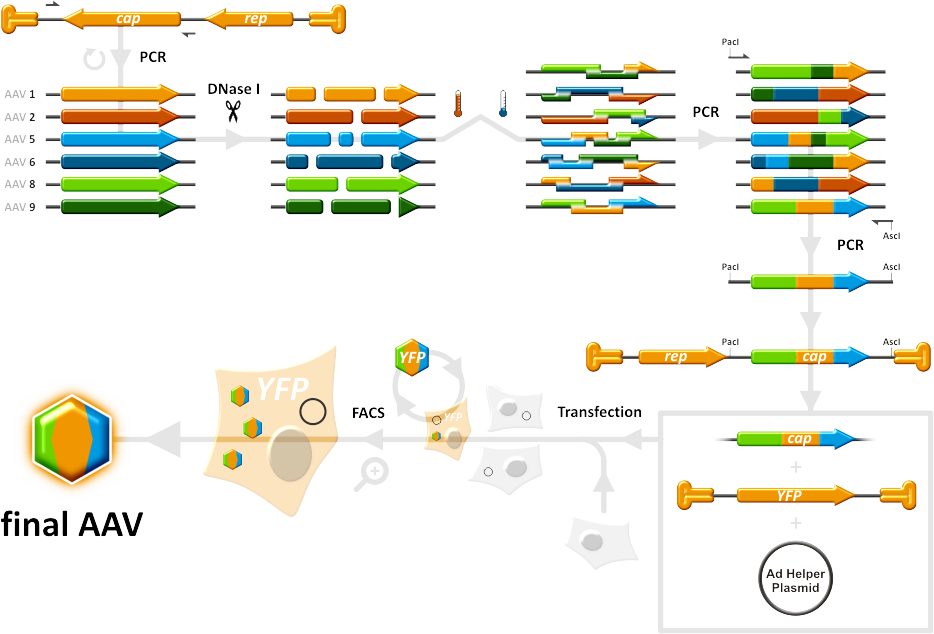Team:Heidelberg/Project/Capsid Shuffling/Homology Based
From 2010.igem.org
| Line 11: | Line 11: | ||
'''Selection in Huh-7 cells:''' | '''Selection in Huh-7 cells:''' | ||
| + | |||
Three selection rounds were carried out on Huh-7 cells, the viral DNA was isolated for each selection round and cloned into a Wilson AAV8 wild-type vector. 12 clones from each selection round were picked, and viruses that contain a YFP construct were produced and used to infect 96-well plates of mouse primary hepatocytes, HeLa and Huh-7 cells. Flow cytometry measurements were done. | Three selection rounds were carried out on Huh-7 cells, the viral DNA was isolated for each selection round and cloned into a Wilson AAV8 wild-type vector. 12 clones from each selection round were picked, and viruses that contain a YFP construct were produced and used to infect 96-well plates of mouse primary hepatocytes, HeLa and Huh-7 cells. Flow cytometry measurements were done. | ||
'''Selection in Mouse Primary Hepatocytes:''' | '''Selection in Mouse Primary Hepatocytes:''' | ||
| + | |||
The fact that mouse primary hepatocytes are particularly hard to infect adds to the selection pressure applied on the AAV library. Two selection rounds were carried out on those cells, and viral DNA was extracted and cloned into the Wilson AAV8 wild-type vector. 20 clones were selected from each selection round and will be tested on Monday next week with a HAAT construct on primary hepatocytes. | The fact that mouse primary hepatocytes are particularly hard to infect adds to the selection pressure applied on the AAV library. Two selection rounds were carried out on those cells, and viral DNA was extracted and cloned into the Wilson AAV8 wild-type vector. 20 clones were selected from each selection round and will be tested on Monday next week with a HAAT construct on primary hepatocytes. | ||
'''Randomly picked clones''' | '''Randomly picked clones''' | ||
| + | |||
In parallel, we picked 48 randomly selected clones from the AAV library, packaged them with a YFP construct and tested them using flow cytometry on HepG2, Huh-7 and mouse primary hepatocytes. One clone of those was able to infect both HepG2 and Huh-7 cells, and was thus packaged with a luciferase construct and injected into mice. Mice experiment showed a specific targeting into the liver. | In parallel, we picked 48 randomly selected clones from the AAV library, packaged them with a YFP construct and tested them using flow cytometry on HepG2, Huh-7 and mouse primary hepatocytes. One clone of those was able to infect both HepG2 and Huh-7 cells, and was thus packaged with a luciferase construct and injected into mice. Mice experiment showed a specific targeting into the liver. | ||
Revision as of 01:09, 28 October 2010

|
|
||
 "
"
